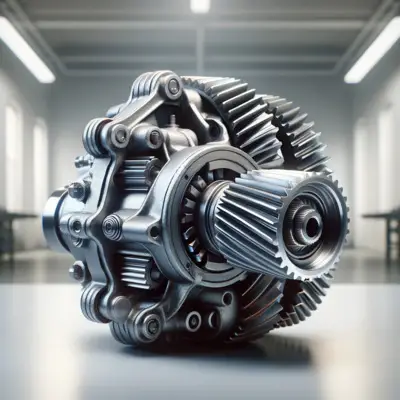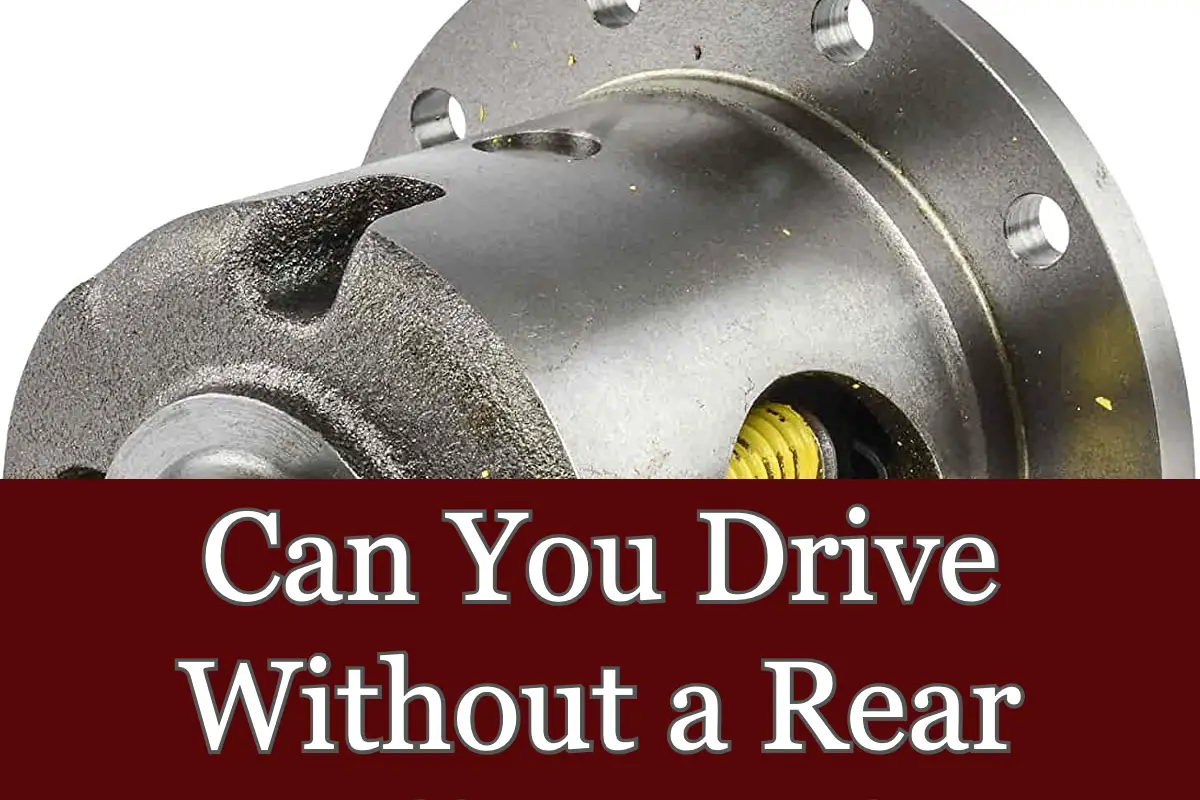Differential, be it front or rear, is the most critical mechanical component of any vehicle. You can’t get the perfect on-demand traction and turning while cornering without a differential. However, can you drive without a rear differential?
Honestly, it’s nearly impossible as well as hazardous to drive with a bad or without a rear differential, especially on a rear wheel-driven car. A differential keeps the wheel spinning according to the needs while turning or cornering. In addition, the differential is responsible for delivering power to both wheels so that they can get the required traction.
However, there is some crucial discussion about this query and we’ll try to cover everything simply. So read this article to get your answer.
Can You Drive With A Rear Differential?

Well, it’s advisable not to drive without a rear differential if the car isn’t a front-wheel drive. But there are lots of cars today that are front-wheel drive run without a rear diff. Also, many electric cars run without a rear differential as it has unique electric motors for drive wheels.
But it is safe and suggested to drive with a rear differential to achieve slip-less turning while wheels rotate differently. If you attempt to drive with a malfunction or without a rear diff, you’ll feel the wheels don’t rotate while turning. Moreover, you notice the car driving straight continuously and poor steering.
If the front-wheel-drive car’s front end takes extra horses, feel free to drive a few miles without a differential. The same thing might go with the rear-wheel drive car. However, still, you should still choose to go with installing a rear diff to enjoy a safe and better journey on any surface.
Reasons Why Can’t You Drive Without A Rear Differential
When you drive a rear-wheel drive car, you must have a rear differential. Otherwise, you won’t drive safely and blissfully. Here are some common problems with driving with no rear diff.
Incomplete Wheels Rotation
Arguably, the differential is the most critical drivetrain component that distributes sufficient power to both wheels. It takes the power from the engine and sends the power to the wheels. This way, the wheels can rotate at different speeds when negotiating turns or driving over rough terrain.
But if there is no differential on the back end, the wheels do not get enough power to rotate differently. Also, the wheel can’t switch the rotation straight to the curb. As a result, vehicles run straight even if you attempt to turn or take cornering.
Rapid Tire Wear
Another bad consequence of not having a rear differential is rapid and uneven tire wear and tear. Why? When turning a corner, one wheel needs to rotate faster than the other. When negotiating a corner, the outside wheel needs to travel a wider distance than the inner wheel.
In this manner, the outside wheels rotate faster to balance the speed and keep the movement right with the inner wheel. But when there is no diff, the tire can’t keep the momentum right which in turn causes jumping and skipping while negotiating a corner or turn.
At this point, there is a risk of tire scrubbing and losing the precise shape of the tire. Consequently, you must pay attention to repairing and pay extra money for a replacement.
Lose Stability
Stability is crucial when driving off-road or on uneven surfaces. To gain precise stability, a differential is needed. Differential holds the grip superbly and helps to achieve the greater traction possible which helps to improve mud or terrain activity. But the problem arises when you have damage or don’t have a differential back. You’ll lose the ultimate stability which can be dangerous and leads to a severe accident.
Related: Can A Bad Differential Cause Power Loss: An In-Depth Analysis
Poor Traction
Everyone wants better traction when diving through potholes or rough terrain. But it can’t be achieved without a differential. Usually, the locking differential locks both axles and provides ultimate torque to both wheels.
It then helps to acquire the required traction to perform better on slippery, wet, or ice surfaces. With proper traction, the wheels have less chance of slipping or unwanted things happening. This is why the differential is a crucial mechanical part.
Increased Transmission Damage
Differential and transmission systems work together to deliver sufficient power to the wheels to keep rotating right. Without a differential, excessive stress is taken by the transmission. As a result, the transmission gets damaged frequently.
Related: Can a Bad Differential Cause Transmission Problems?
Experience Poor Handling And Controlling
Differential contributes to improving handling when acceleration and turning. It seems impossible often that you don’t have control over your car when driving without a differential.
Also, a failed rear differential impacts overall car performance. A car that doesn’t contain a rear diff can’t maintain different speeds at the same time. As a result, the wheels rotate at the same speed, making it harder to control right.
FAQs:
How Important Is A Rear Differential?
The importance of rear differential can’t be ignored. From maintaining the wheel rotation to proper handling, a rear differential contributes a lot. Also, it sends the power to the rear wheels to rotate differently at the same time to manage safe cornering.
When It’s Safe To Drive With No Rear Differential?
You can drive without a rear differential in some circumstances. It’s eligible and will be safe to drive when you have an FWD vehicle. Also, if you choose to drive a straight path instead of rough terrain or a curvy road, it will be safer to drive without a back diff.
Conclusion
To maintain a better drive and flying heel with your car safely, a differential is a vital element. It does a lot of work to make the wheels rotate perfectly while turning. This helps achieve more traction on slippery and wet roads without sacrificing performance. But can you drive without a rear differential?
It depends mostly on your preference and what your car is. If you mostly drive your vehicle in a straight path and have a front-wheel drive car, it’s not so necessary to have a rear differential. Otherwise, you should have a rear differential for smooth functioning.
